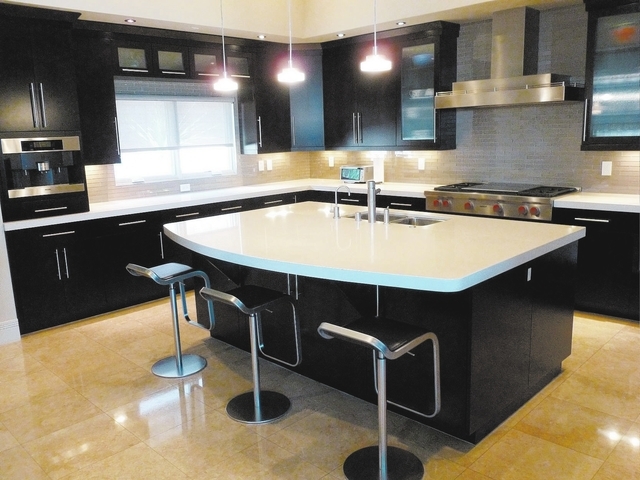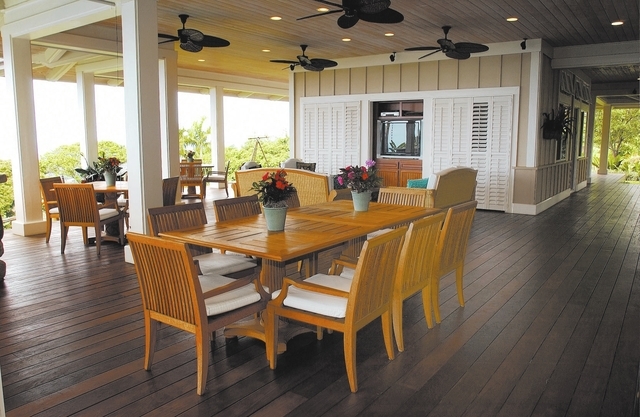Designers use several different billing methods
With the approach of spring, homeowners are once again beginning to take a look around and giving some serious thought to home improvement projects and decorating ideas that had long been put on hold.
Some will doubtless feel they can do it themselves and will jump headlong into the fray. Still others will realize that the best way to proceed is to find and hire a professional interior designer to help bring their dreams to fruition.
Either way, design projects are often a big step filled with uncertainty and trepidation for many. Through the years I’ve seen how the process can be overwhelming for those who opt for “going it alone” and wind up making costly mistakes; having to experience the heartbreak of paying two or even three times to correct poor choices.
It must be a lack of understanding on the part of homeowners of just how designers work and the number of ways they can charge for their efforts that accounts for their skepticism and even fear when thinking about seeking the help of a professional. It’s understandable since there’s really no such thing as a “typical” fee. Still, that shouldn’t be a reason for panic because when you come right down to it, there’s no great mystery in the way in which designers work or charge for their services.
There’s little doubt that the single most asked question posed by a perspective client during an interview with a designer is “what will it cost me?” Most designers will put off the answer (and rightly so) until they know more about the scope of the project, the clients, and just what is involved.
Truth be told, it’s not an easy question to answer right off the bat; and, in fact, the actual question should be “how do you bill for your services?” And this will allow a designer the opportunity to describe their scope of services and just how they bill for them. Most designers (including me) will employ one of the following methods or a combination of these to determine their fee.
n Fixed fee (or flat fee). The designer will give the client a specific fee that will cover most, if not all, costs involved with his scope of services, usually not including reimbursement for expenses. This fee will cover the first stage of conceptual design through all layouts and specifications up to the final installation. This fee will not include the cost of furniture or materials and is often based on the square footage of the project.
n Hourly fee. This fee is based on the actual time spent on the project or a specific service and can often range from $75 up to $200 per hour.
n Cost plus. The designer will specify and purchase all furnishings and materials at the “net” or designer cost price that can actually be as much as 40 percent lower than retail pricing, so that often the client is actually paying less than if he had purchased the item on his own. The designer will then resell these items to the client at the price paid by the designer with an additional mark-up or percentage previously agreed to by the client. This fee serves to compensate the designer for his time and effort and is usually in the 35 percent range.
Most designers will not begin a project without requiring the client to pay some kind of a “design fee” or “retainer.” This serves as “good faith” money or a firm commitment that the client has every intention of going forward with the scope of work agreed upon and also covers the initial time for the designer to create an overall concept and any preliminary floor plans and layouts.
It should be noted that a “retainer” differs from a “design fee” in that the retainer amount is applied by the designer to the final balance due on the project and is held in “escrow” until completion.
But no matter which way you go it’s advisable to avoid any future misunderstanding to have some kind of a written agreement or contract covering the scope of the project before any design services have been rendered. In a word and plainly put, your financial agreement with a designer should simply be viewed like any other business decision.
The more research and planning you can do for yourself initially, before you even engage a designer, the more successful you’ll be in controlling costs in today’s challenging marketplace. Remember that the budget is always in the client’s control and that making changes late in a project or deciding to expand the scope of the work will surely lead to frustration and an increase in the price of the project
A final word: A good designer is no doubt the most worthwhile asset to your project. By thoughtfully putting together elements of a project with value in mind a designer will save you from making unforeseen errors that could out-expense what the designer charges.
Contrary to popular belief, designers are not looking to simply spend as much of the client’s money as they can. They only want to provide the right services for the client’s needs and to be fairly compensated for their efforts and experience.
There really is no better way to achieve your vision for a beautiful home than retaining the services of a professional designer. Working hand-in-hand you’ll be able to resolve any money issues so that you can relax and enjoy the power of design and how it can change your life.
Stephen Leon is a licensed interior designer and president of Soleil Design; he has been designing and manufacturing custom furniture and cabinetry for more than 25 years. He is president of the Central California/Nevada Chapter of the American Society of Interior Designers (World Market Center, Suite A3304) and is a certified professional in green residential design. Questions can be sent to soleildesign@cox.net.





























